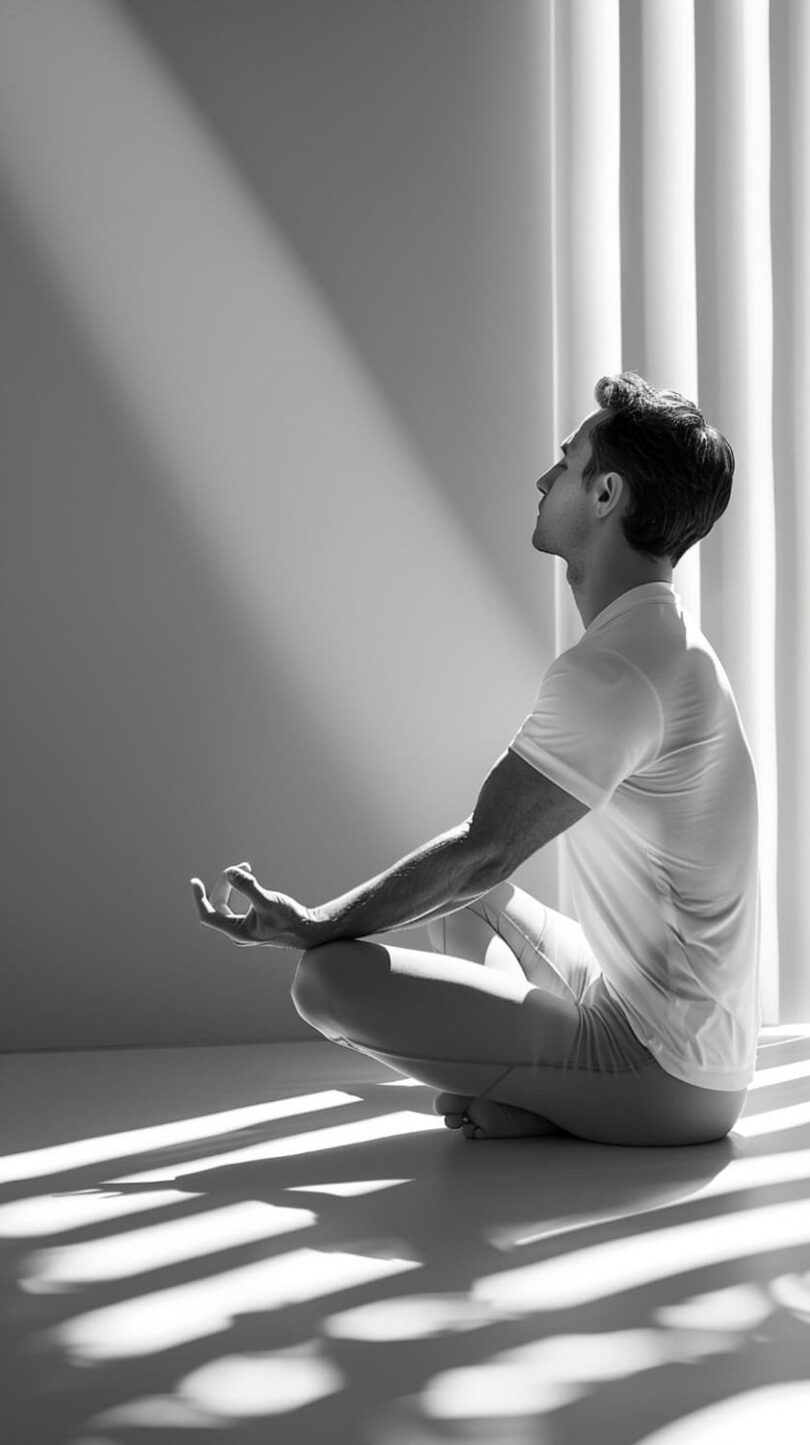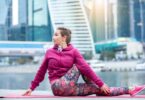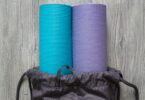Introduction
The yoga aesthetic isn’t just about poses and postures. It’s a holistic approach that blends physical, mental, and spiritual elements to create a harmonious practice. This article delves into the essence of yoga aesthetic, exploring its visual and philosophical aspects, comparing it with functional yoga, and providing practical tips to develop your unique style. Let’s dive in!
Introduction to Yoga Aesthetic
What is Yoga Aesthetic?
Yoga aesthetic is all about the visual and experiential aspects of yoga practice. It encompasses everything from the poses and attire to the environment in which yoga is practiced. Unlike traditional yoga, which focuses more on the spiritual and physical benefits, yoga aesthetic places a significant emphasis on the visual appeal of the practice.
Historical Background of Yoga Aesthetic
Yoga has a rich history dating back thousands of years, with roots in ancient India. The aesthetic aspects have evolved over time, influenced by various cultures and practices. Traditionally, yoga was practiced in simple, serene environments. However, the modern yoga aesthetic incorporates contemporary elements, making it visually appealing and accessible to a broader audience.
Importance of Yoga Aesthetic in Modern Times
In today’s fast-paced world, many people are drawn to the beauty and serenity of the yoga aesthetic. It offers a visually appealing escape from daily stress and helps practitioners feel more connected to their practice. By creating a visually pleasing environment, practitioners can enhance their overall yoga experience, making it more enjoyable and fulfilling.
Visual Elements of Yoga Aesthetic
Yoga Poses and Postures
The core of the yoga aesthetic lies in the poses and postures. Each pose is carefully designed to not only benefit the body but also to create a visually pleasing form. From the graceful lines of a dancer’s pose to the strength of a warrior pose, the visual elements of yoga are captivating and inspiring.
Use of Colors and Clothing in Yoga
Colors and clothing play a significant role in the yoga aesthetic. Bright, vibrant colors can uplift the mood and energy, while calm, muted tones can create a sense of tranquility. The choice of clothing, too, reflects the aesthetic, with many practitioners opting for stylish yet functional attire that enhances their practice.
Yoga Spaces and Settings
Creating the perfect yoga space is an essential aspect of the yoga aesthetic. Whether it’s a minimalist home studio or a lush outdoor setting, the environment significantly impacts the practice. Soft lighting, soothing music, and natural elements like plants can transform any space into a serene yoga sanctuary.
Philosophical and Spiritual Aspects
Mindfulness and Meditation
While the visual elements are important, the philosophical and spiritual aspects are the heart of the yoga aesthetic. Mindfulness and meditation practices help deepen the connection between the body and mind, creating a holistic yoga experience.
Connection Between Body and Mind
The yoga aesthetic emphasizes the harmony between body and mind. Each pose and movement is designed to align the physical and mental states, promoting a sense of balance and well-being. This connection is what makes yoga a powerful practice for both the body and mind.
Spiritual Significance of Yoga Aesthetic
Yoga aesthetic is not just about the physical practice; it also holds deep spiritual significance. By focusing on the aesthetic elements, practitioners can create a more meaningful and connected practice. This spiritual aspect is what sets yoga apart from other forms of exercise, making it a truly unique and enriching experience.
Comparing Yoga Aesthetic and Functional Yoga
Aesthetic vs. Functional Yoga
The debate between yoga aesthetic and functional yoga often centers around their distinct approaches and goals. While both forms aim to improve well-being, they differ in their focus and execution.
Definition of Functional Yoga
Functional yoga prioritizes the practical benefits of the practice, focusing on movements and poses that enhance everyday life. It’s less about how a pose looks and more about how it feels and functions. The emphasis is on building strength, flexibility, and mobility that directly translate to daily activities.
Key Differences Between Yoga Aesthetic and Functional Yoga
Yoga aesthetic is visually oriented, aiming to create beautiful, harmonious forms through poses and settings. It often involves carefully curated spaces, stylish attire, and poses that emphasize grace and alignment. On the other hand, functional yoga is more pragmatic. It’s concerned with the biomechanics of the body, emphasizing movements that support and improve daily functions.
For instance, while a yoga aesthetic class might focus on achieving a perfectly aligned dancer’s pose for its visual appeal, a functional yoga class would emphasize the range of motion and muscle engagement needed to perform the pose safely and effectively, regardless of how it looks.
Benefits of Each Approach
Both yoga aesthetic and functional yoga offer unique benefits. Yoga aesthetic can be incredibly motivating and inspiring. The beautiful poses and serene settings can make the practice feel more enjoyable and fulfilling. Yoga is also a great way to express creativity and individuality.
Functional yoga, however, shines in its practicality. It builds strength, flexibility, and endurance in a way that’s directly applicable to daily life. This approach can be particularly beneficial for those looking to address specific physical issues or improve overall functional fitness.
Integrating elements of both can provide a balanced practice. For example, incorporating the visual appeal of yoga aesthetics can make functional movements more engaging, while the practical benefits of functional yoga can enhance the overall effectiveness of aesthetic poses.
Related Article: Yoga Inspo: Find Inspiration for Your Yoga Practice
Popular Yoga Aesthetic Trends
Current Trends in Yoga Aesthetic
Yoga aesthetics have evolved over the years, reflecting broader cultural trends and the growing popularity of the practice. Here are some of the current trends making waves in the yoga community.
Social Media Influence on Yoga Aesthetic
Social media has played a massive role in shaping yoga aesthetic trends. Platforms like Instagram and Pinterest are filled with stunning images of yoga poses, stylish outfits, and beautifully designed yoga spaces. This visual content inspires practitioners to create their own aesthetically pleasing yoga environments and share their practice online.
Influencers and yoga enthusiasts often post pictures and videos showcasing their yoga routines in picturesque locations, wearing trendy yoga wear. This not only highlights the visual appeal of yoga but also encourages others to try out new poses and settings, making yoga more accessible and engaging.
Popular Yoga Styles
Various yoga styles contribute to the overall yoga aesthetic. Here are a few that stand out for their visual and physical appeal:
- Vinyasa Yoga: Known for its fluid, dance-like movements, Vinyasa yoga is both beautiful and dynamic. The continuous flow of poses creates a visually stunning practice that also offers a good workout.
- Ashtanga Yoga: This style emphasizes a set sequence of postures performed in a specific order. The disciplined and structured nature of Ashtanga yoga makes it visually appealing and highly beneficial for building strength and flexibility.
- Yin Yoga: Focused on deep, passive stretches, Yin Yoga provides a calming, meditative practice. The long-held poses create a serene and graceful aesthetic that promotes relaxation and mindfulness.
Yoga Fashion and Accessories
Yoga fashion has become a significant part of the yoga aesthetic. Practitioners often choose outfits that are not only functional but also stylish. High-waisted leggings, supportive sports bras, and flowing tops are popular choices. The right clothing can boost confidence and comfort during practice.
Accessories also play a crucial role. Colorful yoga mats, blocks, straps, and bolsters add to the visual appeal of the practice space. These items not only enhance the aesthetic but also support the practice by providing comfort and aiding in poses.
Designing a Personal Yoga Space
Creating a personal yoga space is a trend that has gained traction, especially with more people practicing yoga at home. A dedicated space for yoga practice can be a sanctuary of peace and relaxation. Elements like natural light, greenery, calming colors, and minimalistic decor can transform any corner of the home into a yoga haven.
Incorporating items like Himalayan salt lamps, incense, and soft music can enhance the ambiance, making the space inviting and conducive to a mindful practice.
Benefits of Yoga Aesthetic
Physical Benefits
The physical benefits of yoga aesthetic are plentiful. By focusing on the visual and experiential elements of yoga, practitioners can enjoy enhanced motivation and engagement, leading to a more consistent and effective practice.
Improved Flexibility and Strength
Engaging in visually appealing yoga poses encourages practitioners to hold and refine their postures, which can lead to improved flexibility and strength. The desire to achieve beautiful, graceful poses often motivates individuals to push their limits gently, resulting in an increased range of motion and muscle tone.
Enhancing Physical Appearance
Yoga aesthetic naturally focuses on achieving visually pleasing forms, which can positively impact physical appearance. Regular practice can lead to better posture, a more toned physique, and a general sense of grace and poise. The emphasis on alignment and form helps in sculpting the body and enhancing overall physical beauty.
Promoting Overall Health
Beyond the visual appeal, yoga aesthetic practices promote overall health. Consistent yoga practice helps in maintaining a healthy weight, improving cardiovascular health, and boosting the immune system. The combination of movement, breath control, and mindfulness supports holistic well-being, making practitioners feel healthier and more vibrant.
Mental and Emotional Benefits
Yoga aesthetic isn’t just about the body; it significantly impacts mental and emotional well-being as well. The serene and beautiful aspects of the practice create a conducive environment for mental clarity and emotional balance.
Reducing Stress and Anxiety
The calming visuals associated with the yoga aesthetic, such as peaceful settings and soothing colors, help reduce stress and anxiety. Practicing in a visually pleasing environment can induce a sense of calm and relaxation, lowering cortisol levels and promoting a tranquil mind.
Boosting Self-Esteem
Achieving and maintaining aesthetically pleasing poses can boost self-esteem. The sense of accomplishment from mastering challenging poses and creating a visually appealing practice space fosters a positive self-image. This boost in confidence often translates to other areas of life, enhancing overall self-worth.
Encouraging a Positive Outlook
Engaging in yoga aesthetic practices promotes a positive outlook on life. The combination of physical activity, mindfulness, and a beautiful environment uplifts the spirit. The regular practice of yoga in an aesthetically pleasing setting can lead to increased happiness and a more optimistic view of life.
Creating Your Own Yoga Aesthetic
How to Develop Your Yoga Aesthetic
Creating your own yoga aesthetic is a personal journey that reflects your unique style and preferences. By thoughtfully combining visual elements with your practice, you can develop a space and routine that is both beautiful and functional.
Choosing the Right Yoga Style
The first step in developing your yoga aesthetic is selecting a style that resonates with you. Whether you prefer the dynamic flow of Vinyasa, the structured discipline of Ashtanga, or the calming stretches of Yin yoga, choose a style that aligns with your goals and personality.
Each yoga style has its unique aesthetic, so consider what visually appeals to you. Vinyasa might appeal if you enjoy fluid, dance-like movements, while Ashtanga might suit those who appreciate structure and repetition. Yin yoga is perfect for those who seek tranquility and deep relaxation.
Selecting Appropriate Attire and Props
Yoga attire and props are crucial elements of the yoga aesthetic. Opt for clothing that not only feels comfortable but also makes you feel good. High-waisted leggings, supportive sports bras, and stylish tops are popular choices. The right outfit can boost your confidence and enhance your practice.
Props like yoga mats, blocks, straps, and bolsters add to the visual appeal and functionality of your practice. Choose items in colors and designs that inspire you. For example, a vibrant yoga mat or a beautifully designed block can make your practice space more inviting.
Designing a Personal Yoga Space
Creating a dedicated yoga space is essential for maintaining a consistent practice. Whether you have a whole room or just a small corner, make it a place where you feel calm and focused.
Consider the following elements when designing your yoga space:
- Lighting: Natural light is ideal but soft; ambient lighting can also create a serene atmosphere.
- Colors: Use calming colors like blues, greens, and neutrals to create a peaceful environment.
- Decor: Incorporate items that inspire tranquility, such as plants, candles, and artwork. Minimalist decor can help reduce distractions and keep the focus on your practice.
- Sound: Soft, soothing music or nature sounds can enhance the ambiance of your yoga space.
Personal Touches
Adding personal touches to your yoga space can make it truly your own. Consider incorporating elements that hold personal significance or bring you joy. This could be a favorite piece of artwork, a special plant, or even a vision board with inspiring quotes and images.
Personalizing your yoga aesthetic helps create a space where you feel comfortable and motivated to practice regularly. It turns your yoga routine into a meaningful and enjoyable part of your daily life.
FAQs about Yoga Aesthetic
What is the difference between yoga aesthetic and traditional yoga?
Yoga aesthetic focuses on the visual and experiential aspects of the practice. It emphasizes creating beautiful, harmonious forms through poses and settings. Traditional yoga, on the other hand, prioritizes the spiritual and physical benefits of the practice. While yoga aesthetic aims for visual appeal, traditional yoga is more concerned with the inner journey and overall well-being.
How can I incorporate yoga aesthetics into my daily routine?
Incorporating yoga aesthetics into your daily routine can be simple and enjoyable. Start by creating a dedicated yoga space that inspires you. Choose calming colors, soft lighting, and minimalistic decor. Select yoga attire that makes you feel good, and use props that add to the visual appeal of your practice. Finally, practice mindfulness and focus on creating beautiful, harmonious poses.
Are there specific yoga poses that emphasize aesthetic benefits?
Yes, certain yoga poses are particularly known for their visual appeal. Poses like Dancer’s Pose, Tree Pose, and Warrior II create elegant lines and shapes that are both beautiful and beneficial. These poses not only look graceful but also build strength, balance, and flexibility. Practicing these poses can enhance both the aesthetic and functional aspects of your yoga routine.
Can yoga aesthetics improve mental health?
Absolutely! The calming visuals associated with the yoga aesthetic can significantly improve mental health. Practicing in a visually pleasing environment can reduce stress and anxiety, promote relaxation, and boost overall mood. The combination of physical movement, mindfulness, and a serene setting creates a holistic approach that supports mental well-being.
What are some tips for creating a personal yoga space?
Creating a personal yoga space involves a few thoughtful steps. Choose a quiet, clutter-free area in your home. Use calming colors and soft lighting to create a peaceful ambiance. Incorporate elements like plants, candles, and soothing music to enhance the environment. Ensure you have the right props and a comfortable yoga mat. Personalize the space with items that hold personal significance and inspire you.
Conclusion
The concept of yoga aesthetic intertwines beauty with the discipline of yoga, creating a practice that is visually pleasing and deeply rewarding. By understanding and embracing the visual elements, philosophical aspects, and current trends, you can enrich your yoga experience and make it uniquely yours.
From the fluid movements of Vinyasa to the structured poses of Ashtanga, the variety of styles available allows for personalization and creativity. The benefits of yoga aesthetics extend beyond the physical, promoting mental clarity, emotional balance, and a positive outlook on life. Creating a dedicated space for your practice, choosing the right attire, and incorporating props can transform your routine into a visually appealing and motivating experience.
By integrating both aesthetic and functional elements, you can build a practice that supports your overall well-being while also satisfying your creative and visual senses. This holistic approach to yoga not only enhances your physical health but also nurtures your mind and spirit.
Incorporate these elements into your daily practice, and watch how yoga aesthetic transforms not just your poses but your entire outlook on life. Whether you’re a seasoned practitioner or just starting, embracing the aesthetic aspects of yoga can lead to a more fulfilling and beautiful journey on the mat.
Related Article: Yoga: Transformative Benefits, Practices, and Daily Integration







